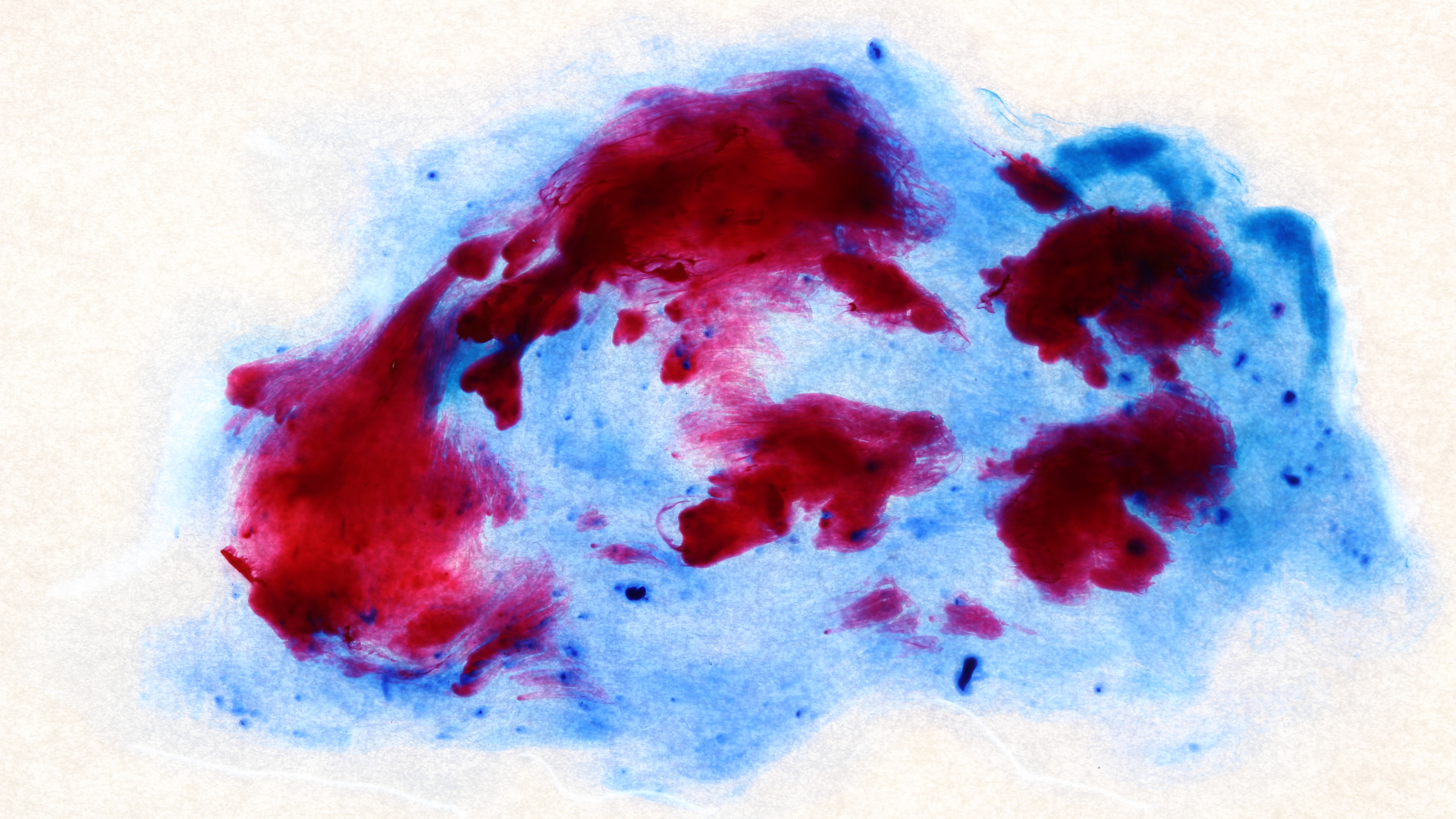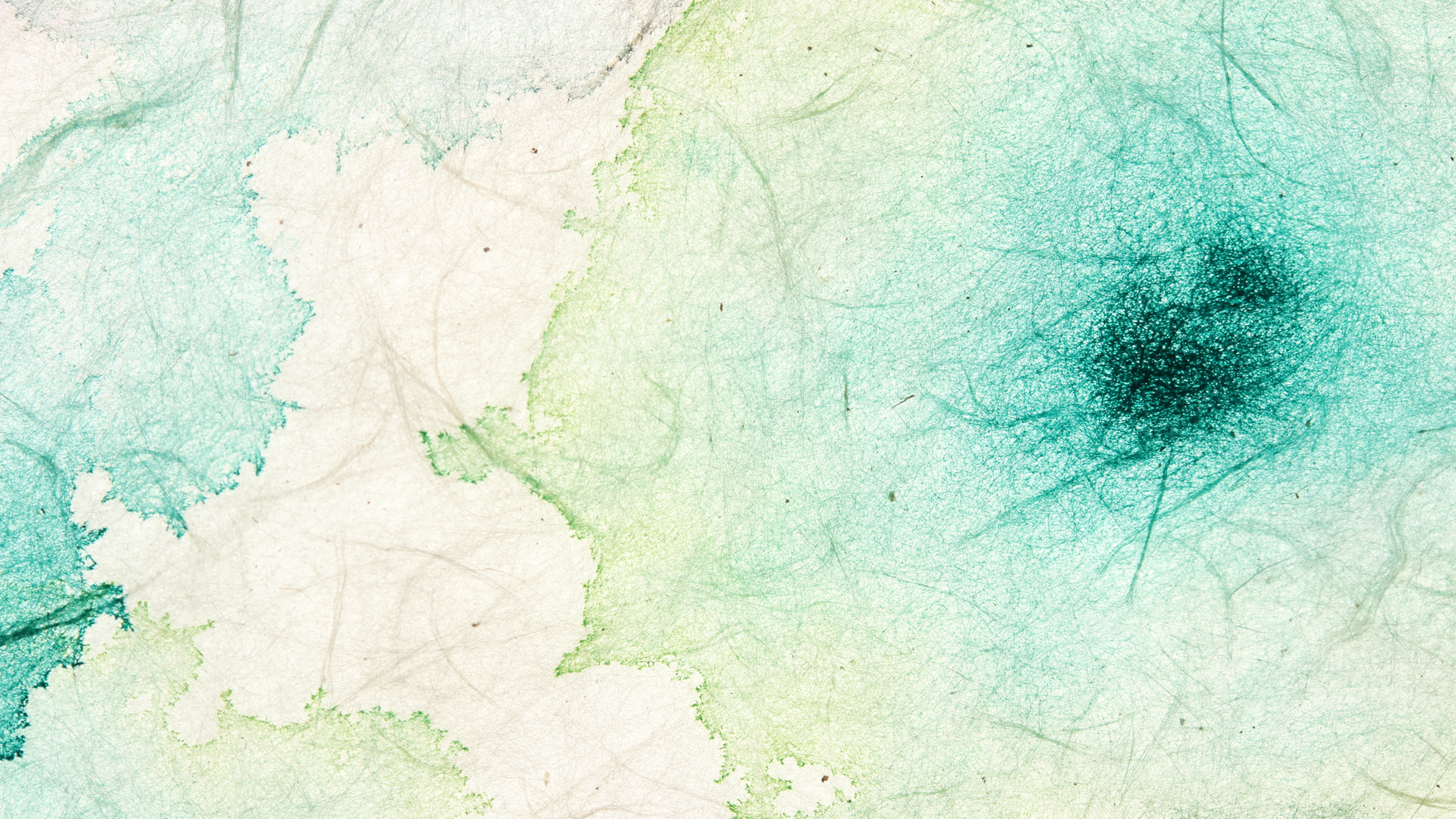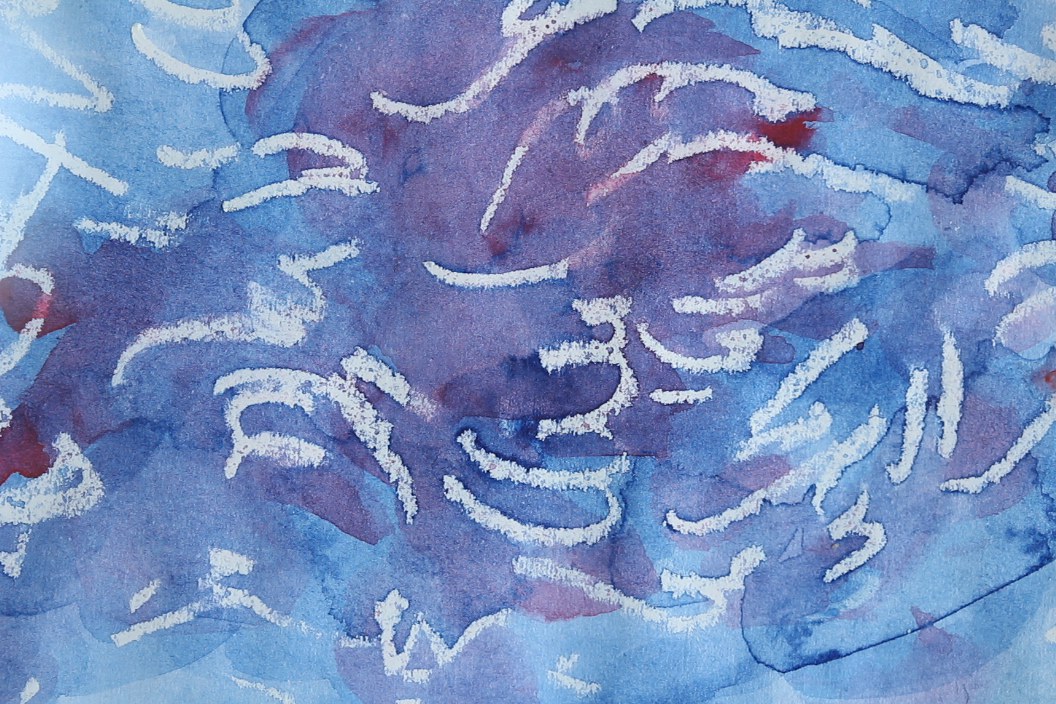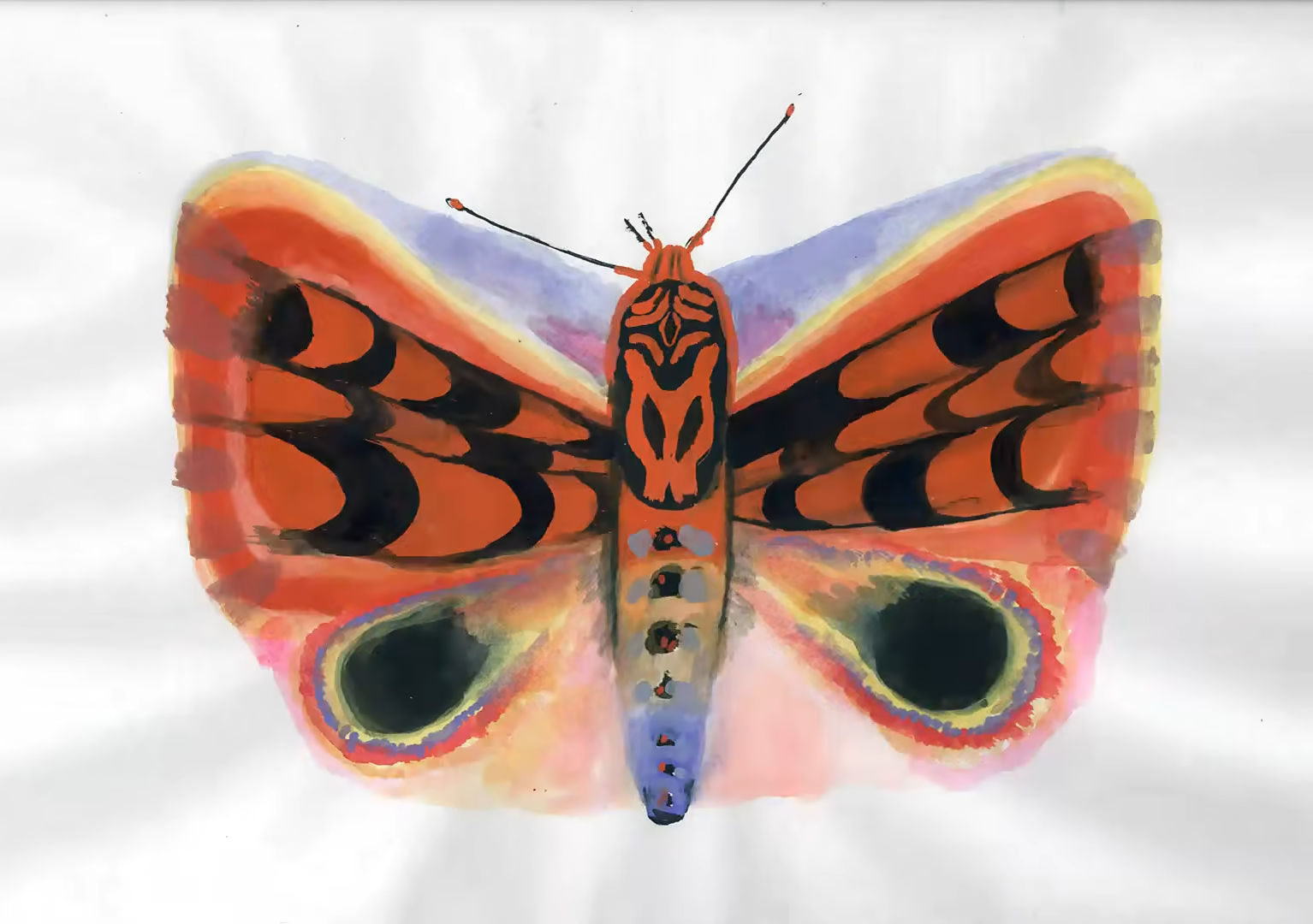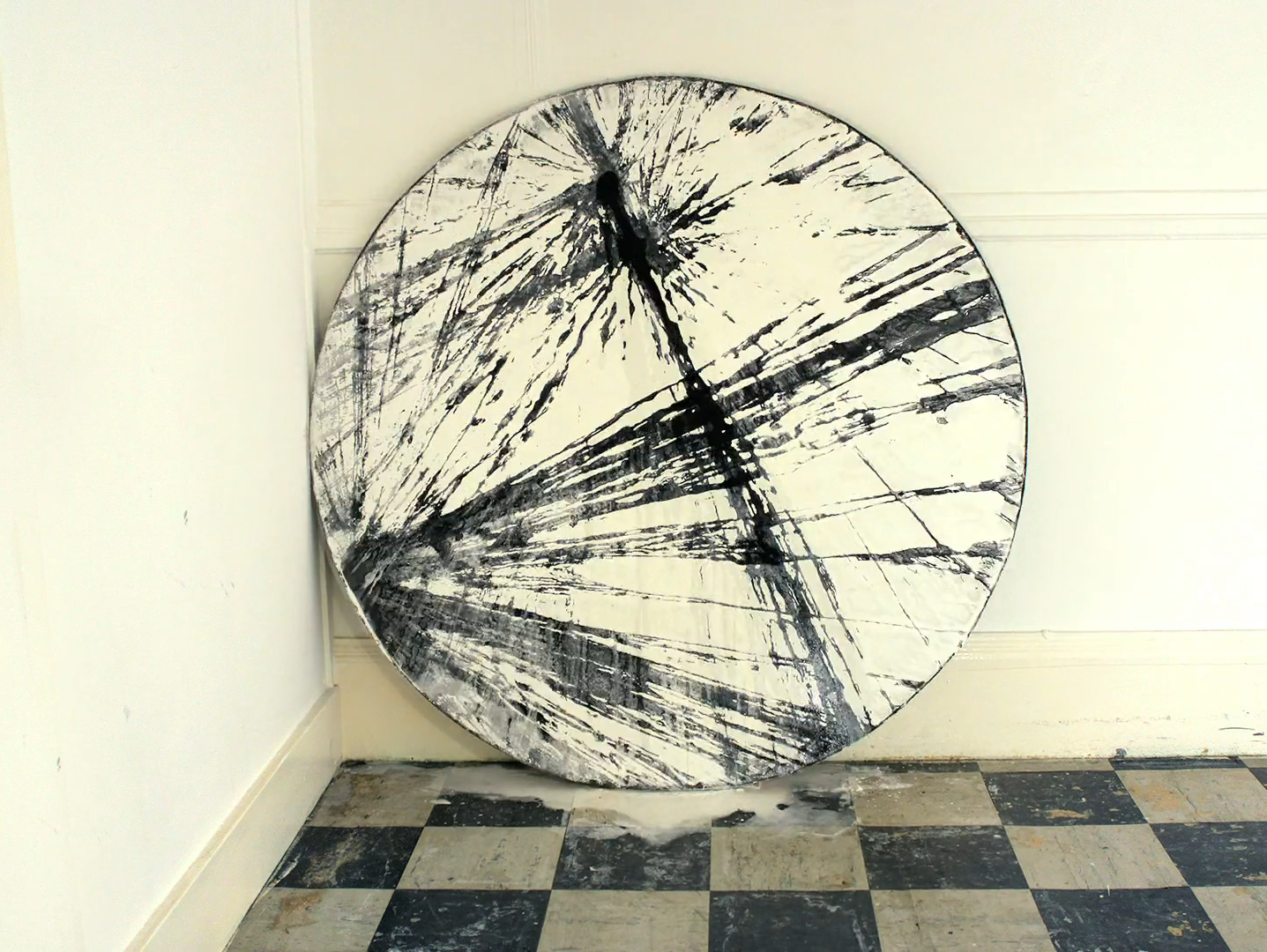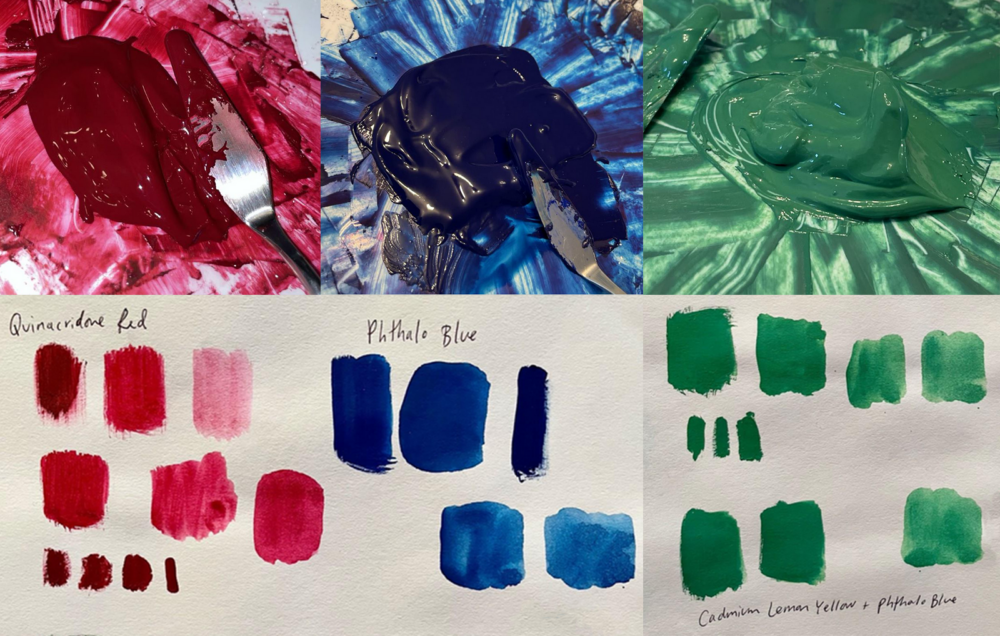
Experiments with making gouache for animation using store-bought pigments
Making Gouache for Beginners
- Dry pigments (Mia chose Quinacridone Red, Cadmium Lemon Yellow, Phthalo Blue, and Titanium White)
- Gum arabic solution
- Calcium carbonate chalk
- Distilled water
- Honey, clove oil, or vegetable glycerine (Mia used honey)
- Gloves, palette knife, flat surface to mix the paint on, containers for storing paint
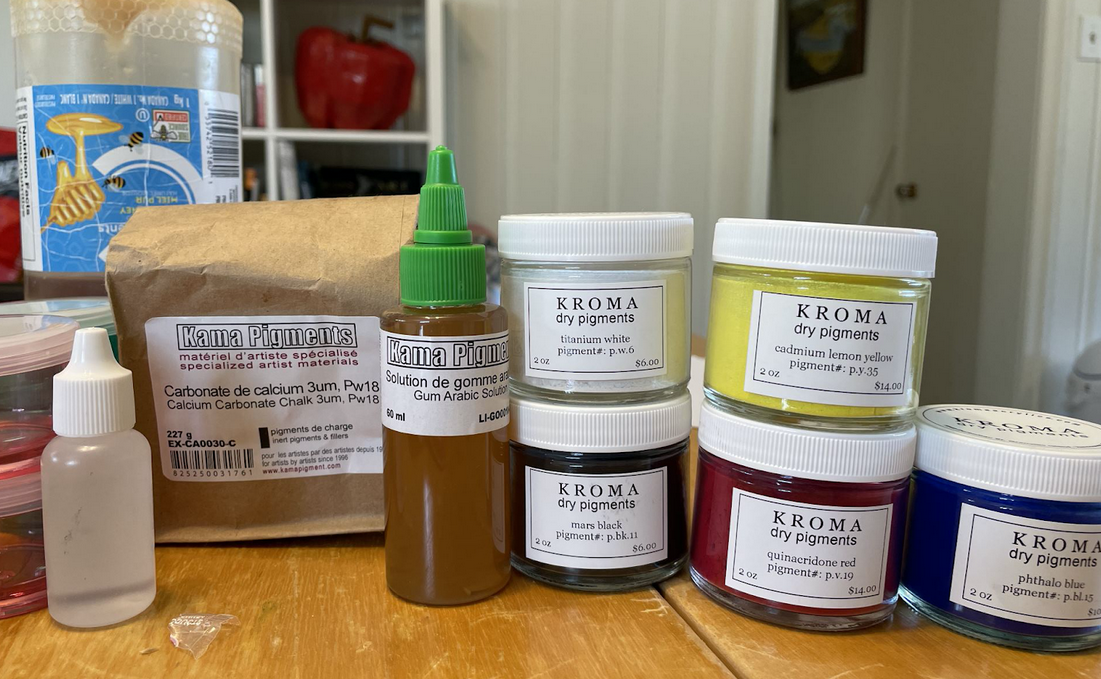
all ingredients are laid out
Creating each colour involved mixing the liquid ingredients (gum arabic solution and distilled water) into the dry ingredients (pigment and powdered calcium carbonate chalk) using a palette knife. Mia also added honey, because – along with glycerine or clove oil – it assists with preservation and helps retain moisture, allowing the paint to be easily rehydrated. The tutorial’s author encouraged experimenting with the amount of liquid ingredients when mixing until reaching a creamy texture. When making each colour, Mia continually tested on paper, both with and without water, until she achieved a smooth consistency that allowed fluid, opaque strokes and a watercolour-like transparency.
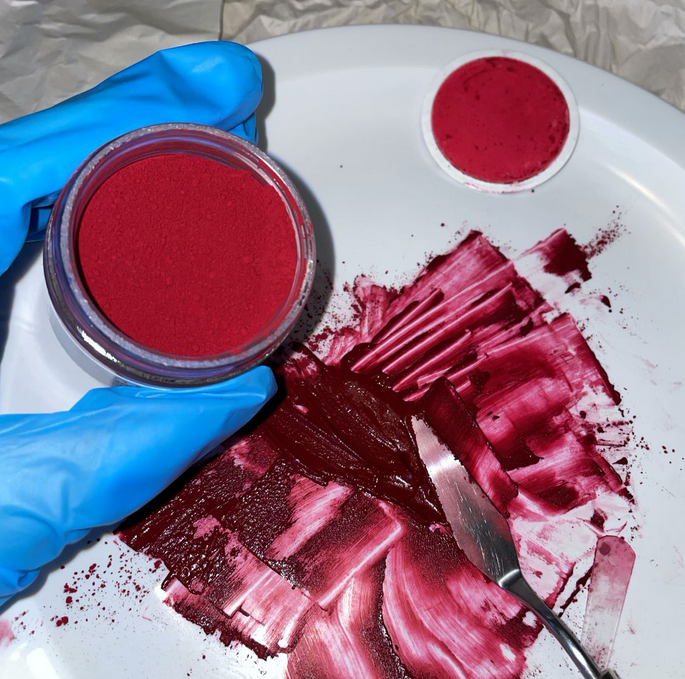
the trial-and-error process of mixing pigment and binder
Through these experiments, Mia learned that the unique qualities of each pigment will inform the process of making paint. This was evident in her experience mixing Phthalo Blue, which has a very small particle size and seemed to require higher quantities of binder (and much more time mixing) to achieve a smooth consistency. In making green, Phthalo Blue had an overpowering influence over Cadmium Yellow and Titanium White, even after introducing just small amounts. It was similarly prone to excessive staining during the making process and in the production of animation experiments.
Mia created short animation tests using the homemade colours and found them easy to work with, particularly their ability to be reactivated by water long after drying in their containers. She tried more traditional techniques by painting numerous small frames on paper and then recording them with macrophotography, as well as direct under-the-camera animation you can see below. Another technique was allowing gouache to dry on plastic sheets and then scratching or scraping them. She continued to use them throughout months-long pigment explorations, with a particular fondness for the vibrance and transparency of the Quinacridone Red.
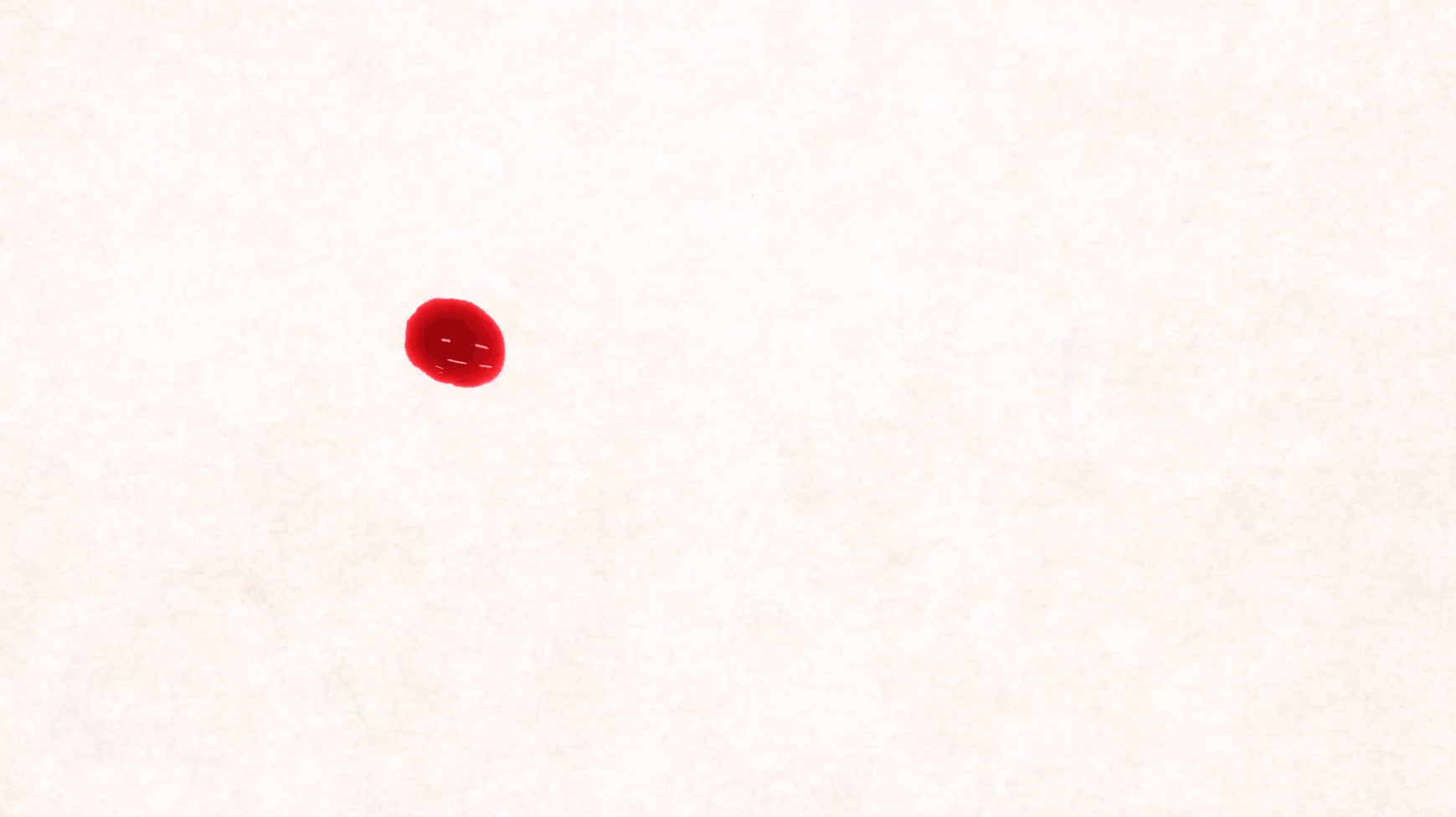
Mia’s homemade gouache paints tested on paper under-the-camera.
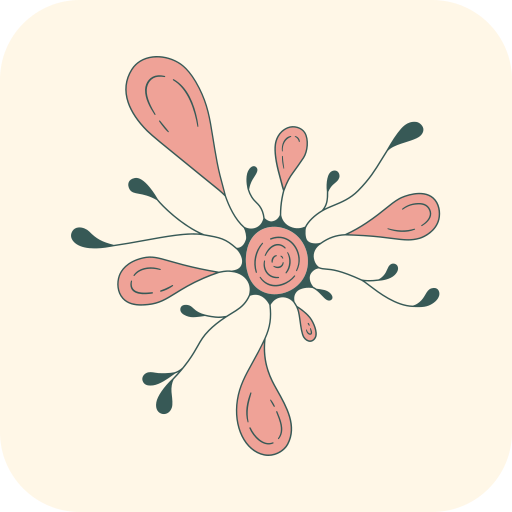
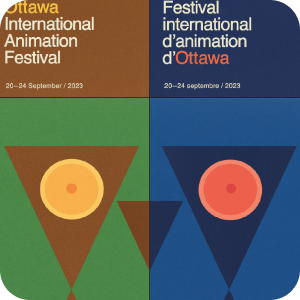
“Dots, Lines, Washes: Animating Ink”
Curatorial essay published in OIAF 2023 festival book.
Read Essay